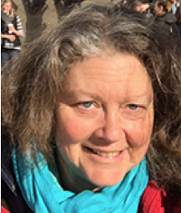This is a guest blog by MIT Master Trainer Sue Maddock.
Its been almost a year since I actively changed my focus from teaching computer science to promoting computer science. While my fundamental goal has not changed helping students of any age explore and enjoy the process of problem solving using programming I have found myself seeking out different audiences in addition to teaching my traditional classes. MIT App Inventor facilitates the process intuitively and convincingly.
I teach in a college preparatory day school and my computer science classes both at the AP level and the introductory electives have been full for several years. Since I started teaching at the school I have watched enrollments grow and waitlists form. However, the primary students in these classes were students who already knew they were interested in computer science; I wanted to reach out to students who had never considered programming or who had already rejected it as unrelated to their interests and therefore not worth pursuing. I have found exposure to coding as a first try or as a replacement of an outdated experience to be critical. Id like to share four different ways in which Ive tackled this problem by taking (or sometimes creating) an opportunity to share my love of coding with different groups.
The first opportunity is due to a combination of my own role at school that of a math teacher and a computer science teacher and of the open-minded nature of my math department colleagues. In recent years Ive volunteered to step into my colleagues math classes and to teach a coding class, anywhere from 45 to 90 minutes. I appreciate that they have been able to give me the time; in return I get to challenge a huge variety of students to try programming. That short exposure to the type of thinking used in computer science intrigues students in surprising ways and I have had many students, most frequently girls, later tell me that the short lesson was pivotal in their decision to sign up for a class.
The second opportunity arose when I visited my daughter in Sapporo, Japan this past summer. Although her degree is in computer science, she is currently an assistant English teacher in a typical Japanese junior high school (grades 7-9). Jenna asked me if I would allow her eighth grade students to interview me in order for them to practice their English. I agreed, but asked if we could also do a programming demonstration. Our limitation was one computer and four tablets to be shared by 35 students. For the demonstration Jenna and I helped the students collectively create a game app using App Inventor. The game was then downloaded to the tablets and played by groups of students. The end result was laughter, chaos, tablet faces that needed a good cleaning, and most importantly, a core of students in each class asking about App Inventor and questioning how they could do more programming.
The third and fourth opportunities are directly related to each other through my school. In June of last year I was asked to lead a 30 minute workshop on programming and when we returned to school in August I led a 2 hour workshop on computational thinking. There were fifteen in each session and the participants ranged from teachers in Pre-K up to 12th grade, as well as a few administrators. Very few of them had ever done any programming and most would check off a box marked Humanities rather than STEM if they were asked to categorize themselves. For the June group we started with a simple drawing app; by the time I told them that had to leave or be late to their next commitment (they had already stayed through their snack break) there were fifteen different projects underway in the classroom. As we worked as teachers shared their successes and ideas and questions with each other I was able to draw the parallel between what they were experiencing and what my students do on a daily basis. Suddenly the success Ive had with students who were traditionally unmotivated in their traditional classes made sense to this group of teachers. I know that my colleagues experience of coding will translate into a recommendation to their advisees that computer science is worth trying.
The August group also used App Inventor to explore the process of computational thinking. My colleagues were intrigued by how quickly several basic ideas taught in common to a group could swiftly transform into fifteen distinct projects, allowing for expressions of individual interests. I could see my colleagues stereotypical images of coding disintegrating as they worked. For me, a secondary but important goal of this session was to open a discussion of how computer science can take a lead or a supporting role in any discipline and that students deserve to be exposed to computer science. Over the past several years I have been collecting examples of how computer science supports research and innovation in diverse fields such as the digital humanities, political science, crisis informatics, and bio-medical engineering; these stories resonate. They are one more way in which we can demonstrate the importance of computer science to a group that needs to be shown.
Students (and adults) who are reluctant to try computer science often do so because they have no understanding of what it currently means. Take any opportunity you are given to show them how much fun and meaningful it can be.

